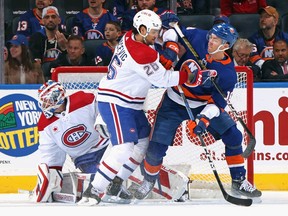Fernando Alonso comfortably topped second practice at the Saudi Arabian Grand Prix overnight, but taking any advantage over Max Verstappen at face value is a dangerous proposition.
FP2 in Jeddah is the only practice representative session before qualifying and the race. With the Arabian sun beating down on the track in FP1 and FP3, second practice is the only hour teams and drivers have to simulate the cooler post-sunset conditions prevalent when it really counts.
It leaves a lot to cram into just 60 minutes, and programs aren’t always directly comparable.
Every practice, qualifying session and race from the 2024 FIA Formula One World Championship™ LIVE. New to Kayo? Start Your Free Trial Today >
That explains in part how Alonso has emerged on top of the time sheet with a 0.23-second advantage over George Russell and a 0.331-second lead over Verstappen.
There’s also an Aston Martin factor in all of this. The Silverstone team tends to run closer to qualifying trim on practice days, putting it disproportionately high in the order and leaving it with less on the table to gain overnight.
Telemetry data suggests Aston Martin was operating with a higher engine mode than other teams, evidenced by it being comfortably faster than every car other than Mercedes down the straights.
“Obviously it’s only free practice,” Alonso said. “As we saw last year and also in Bahrain, we are faster in free practice than in qualifying.
“I think we run a different strategy in terms of fuel loads, engine modes and so on.”
All that said, Aston Martin was fast here last year, with Alonso qualifying and finishing third. Its speed shouldn’t be entirely discounted.
But there’s a clear kicker.
RED BULL RACING STILL AHEAD FOR THE RACE
As you might’ve expected based on Verstappen’s domination of the Bahrain Grand Prix after a closer qualifying session, in race trim his RB20 looks clearly superior to the rest of the field.
His race simulation on the medium tyre was extremely strong, clocking in at close to half a second faster than Mercedes’s best efforts.
That’s roughly in line with the advantage the Dutchman had in the race last weekend.
Race simulation — medium tyre
1. Red Bull Racing: 1:34.038
2. Mercedes: +0.435 seconds
3. Ferrari: +0.703 seconds
4. Aston Martin: +0.706 seconds
5. McLaren: +0.915 seconds
6. Alpine: +1.223 seconds
7. Sauber: +1.357 seconds
8. Williams: +1.573 seconds
You can see based on these numbers that Aston Martin is expected to revert to roughly where it was in Bahrain, towards the back of the frontrunning pack.
Oblivious Lewis almost causes huge crash | 01:19
But there are some caveats in the race averages.
Neither Mercedes nor Ferrari completed representative runs.
Both Mercedes drivers had only very brief stints on the medium tyre. Both drivers had their sessions shortened by the need to make extensive set-up changes after FP1 was marred by bouncing at the rear axle, a particular problem at a track that is both extremely high speed but also features street-style high kerbs.
Ferrari ran an alternative program, splitting its drivers between the softs (Charles Leclerc) and the mediums (Carlos Sainz).
Sainz was hampered by an undisclosed illness that left him operating beneath capacity, further clouding the numbers.
“It has been a very difficult day for me as I haven’t fully recovered from the sickness that has kept me in bed for the last 24 hours and I still feel very weak,” Sainz said. “Even though I couldn’t push to the limit today, at least we completed the program, and hopefully tomorrow I will be fully recovered and we can focus on qualifying and the race.”
But the effect of all those asterisks is only to highlight that the frontrunning group is probably closer than the numbers appear — but behind Red Bull Racing, which looks comfortably at the head of the pack in race trim.
TRAFFIC WILL DEFINE QUALIFYING
All that said, qualifying is still expected to be close for much the same reason it was in Bahrain.
The RB20 isn’t built to dominate over a single lap, and the cars immediately behind it are fundamentally fast.
“Looking to qualifying, I am feeling good,” Verstappen said. “It will be tight, but we are happy with our performance today and looking forward to tomorrow.”
That does at least give rivals an opening. Though Jeddah is fast, it’s still a street track, and overtaking isn’t easy.
Ferrari was faster in qualifying last weekend, just not in the right session. If Verstappen is shuffled off the front row, victory wouldn’t be guaranteed in what’s predicted to be a one-stop race.
Qualifying will also be dictated in part by traffic, and we already got a taste of the chaos in FP2.
Lewis Hamilton was handed an official warning and his Mercedes team copped a €15,000 (A$25,820) for obstructing Logan Sargeant.
The stewards found that the slow-moving Hamilton’s hadn’t received sufficient warning that Sargeant was fast approaching on a hot lap, forcing the American off the track to narrowly avoid an incident.
It wasn’t the only case of road rage in the hour-long session.
Despite the Jeddah Corniche Circuit clocking in at 6.174 kilometres, traffic is a perpetual problem owing to the close-in walls lining the track.
Sightlines are reduced through some of the circuit’s quickest corners, which means slow cars appear around the bends suddenly, leaving little time for the faster approaching driver to react.
Organisers have moved some barries away from the circuit boundary over the years, but only so much can be done given the track’s street setting.
It will fall to engineers on the pit wall to be super attentive to traffic flows, especially in Q1, when all 20 drivers will be on track. Impeding usually comes with a three-place post-session grid penalty, which around a street track can be extremely costly.
McLAREN QUIETLY CONFIDENT
Though McLaren didn’t trouble the top of the time sheet on practice day, the MCL36 looked generally more competitive in Jeddah, though a split run plan between Lando Norris and Oscar Piastri obscured the team’s pace.
Norris’s race simulation on the hard tyre was particularly impressive. His average time, corrected for the slower pace of the compound and for degradation, puts him in the mix with Ferrari and Mercedes and ahead of Aston Martin.
Race simulation — hard tyre
1. McLaren: 1:34.653
2. Williams: 1:34.900
3. Haas: 1:35.672
4. Sauber: 1:35.883
“It’s a little bit difficult to tell where exactly we are,” Piastri said. “But I think we’re somewhat in the mix again, which is positive.
“We have some finetuning to do for tomorrow, but I think we look okay.”
Horner & Max’s dad share heated chat | 00:19
Those same conditions also give Williams and Haas a bump up the notional order to the head of the second group of cars, giving them a shot of a surprise Q3 berth and putting them first in line to pick up points if trouble strikes any of the top five teams.
The picture is a little less clear for RB.
Race simulation — soft tyre
1. Ferrari: 1:34.509
2. RB: 1:35.246
3. Haas: 1:35.348
The team focused on the soft tyre with both drivers, which left it well out of step with the rest of the field, and Daniel Ricciardo was well off the single-lap pace after being blocked on his first hot lap and mystifyingly finding no performance from the rubber on his second attempt.
The Aussie was the faster of the two on his race simulation, but the data suggests the Faenza squad is still a step behind Haas and Williams in the midfield battle.
“It’s really hard to predict the outcome because the standing has been very close today,” Ricciardo said. “It’s such a different circuit compared to Bahrain; the surface and the way the tyres behave are different.
“It’s a great track, so I think qualifying will be a fun session tomorrow.”







